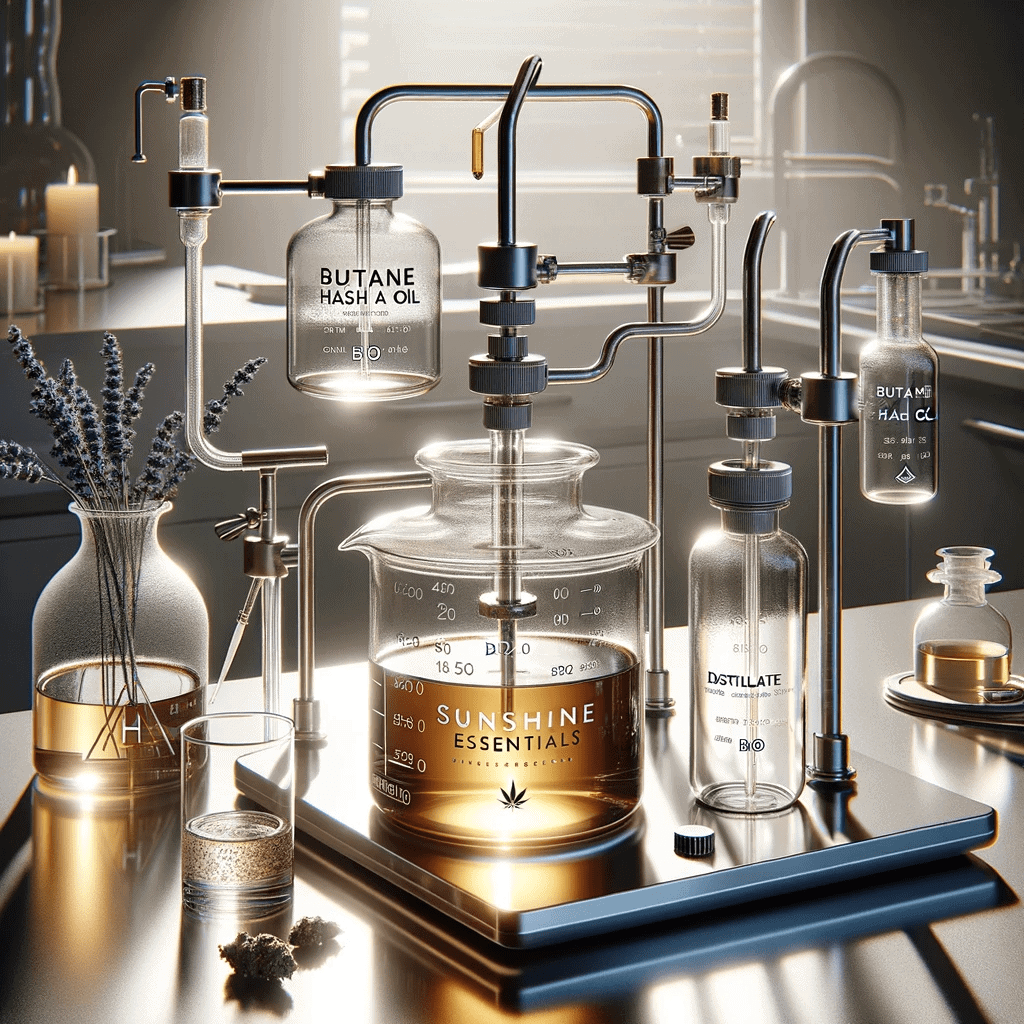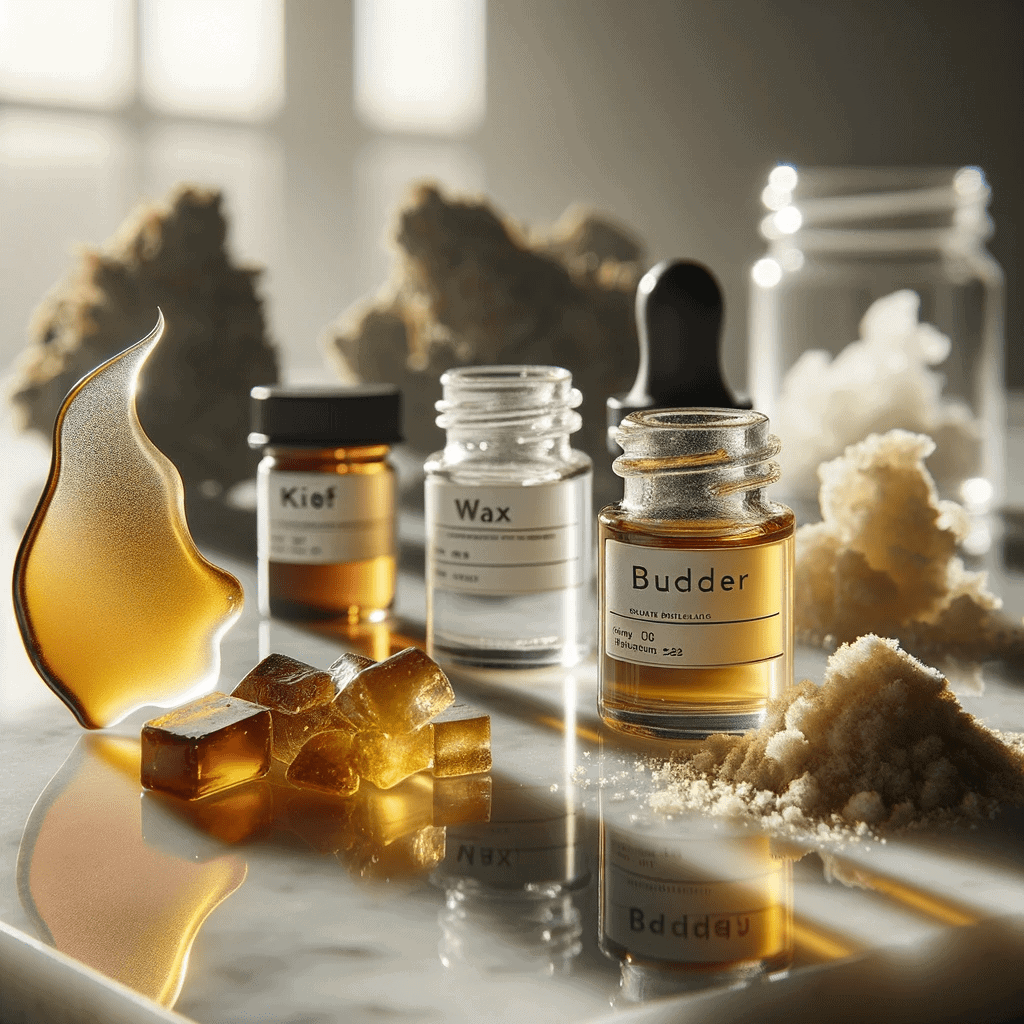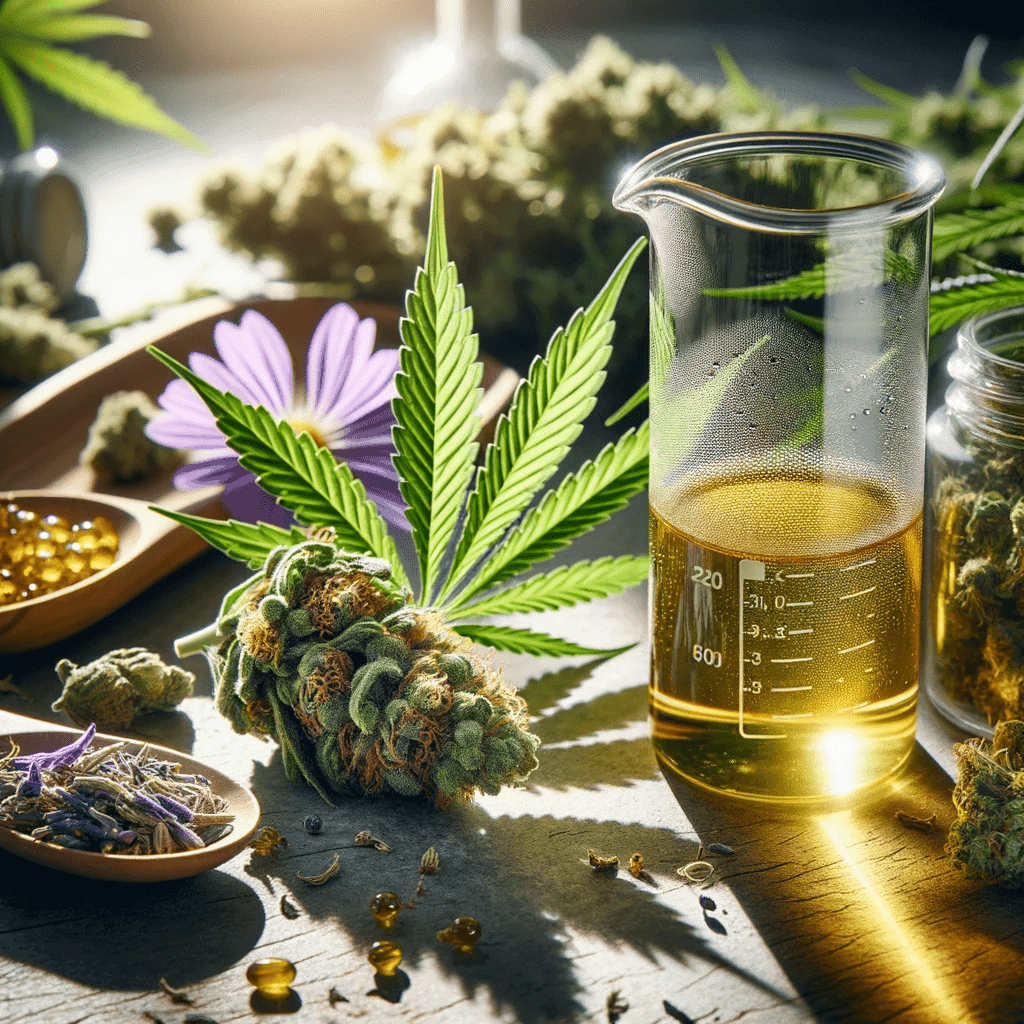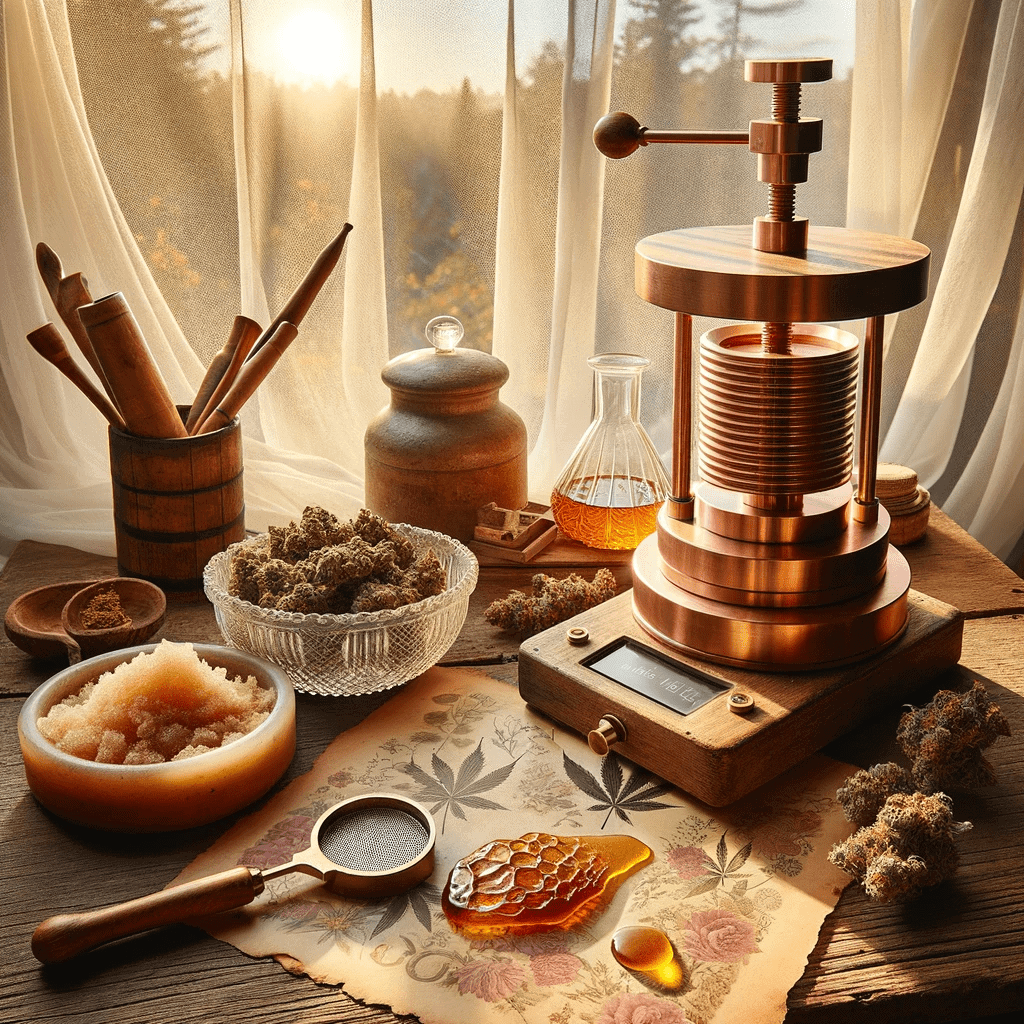
In the diverse world of cannabis, the terms extracts and concentrates are often used interchangeably to refer to the variety of products obtained from the cannabis plant. However, the methods used to obtain these products are as diverse as the products themselves. This article delves into the intricate world of cannabis extracts and concentrates, exploring the different types, their production methods, and the safety considerations involved.
Key Takeaways
- Cannabis extracts and concentrates are products obtained from the cannabis plant, varying in texture, appearance, potency, flavor, and production method.
- Extraction methods are categorized into solvent-based and solventless (or mechanical) extractions, each with its unique advantages, disadvantages, and safety considerations.
- Various types of extracts and concentrates like Rosin, Shatter, Wax, Distillate, and others offer different experiences and are suited for different consumption methods.
- Understanding the production methods and the characteristics of each type can enhance the consumer’s experience and ensure safety in both production and consumption.
A Dive into Extraction Methods
The core of creating cannabis extracts and concentrates lies in the extraction process. This process is aimed at obtaining the potent cannabinoids and terpenes from the plant material. There are two main categories of extraction:
- Solvent-based Extraction: Utilizes volatile chemicals to dissolve the trichomes from the plant material. The solvent is then removed, leaving behind an extract like shatter, wax, or vape oil.
- Solventless or Mechanical Extraction: Here, the trichomes are beaten, rubbed, or pressed from the plant without using chemicals, resulting in concentrates like kief, hash, or rosin.
| Extraction Method | Description | Examples |
| Solvent-based | Uses volatile chemicals to dissolve trichomes, which are then evaporated to obtain the extract. | Shatter, Wax, Vape Oil |
| Solventless or Mechanical | Employs physical methods to separate trichomes from the plant material. | Kief, Hash, Rosin |
Each method has its advantages and disadvantages. For instance, solvent-based extraction can be manipulated to isolate specific cannabinoids, offering targeted effects. On the flip side, solventless methods are often seen as more natural and safer, especially for at-home productions. They also tend to preserve more of the original cannabinoids, unaltered by chemicals.
Types of Cannabis Extracts

Cannabis extracts are primarily obtained through solvent-based extraction methods. Here are some common types:
- Shatter: Known for its glass-like, hard texture, and clear appearance. Ideal for dabbing due to its purity.
- Wax/Budder: Characterized by a soft, runny texture, making it easy to dab, vape, or smoke.
- Pie Crust/Honeycomb: A more brittle form of wax, yet softer than shatter, known for its crumbly texture.
- Butane Hash Oil (BHO): A potent extract obtained using butane as a solvent. It can come in various forms like wax, budder, or honeycomb.
- Caviar/Jelly Hash: Caviar is made by coating cannabis buds with high-quality resin and rolling them in kief, while Jelly Hash is a mix of cannabis oil and bubble hash.
- Cannabis Oils: Extracted from leaves, buds, or seeds, and used for dabbing, vaporizing, or as edible cooking oil.
- Distillate: A highly potent extract obtained by distilling the extract to isolate cannabinoids.
- Live Resin: Known for preserving the terpenes and cannabinoids by freezing the fresh plant material before extraction.
Types of Cannabis Concentrates

Concentrates are typically obtained through mechanical or solventless extraction methods. Here’s a look at some common types:
- Kief: The collection of resins and trichomes from the cannabis plant, known for its dusty, fluffy texture.
- Hash: Made by applying light heat and high pressure to kief, preserving most of the natural cannabinoids and terpenes.
- Bubble Hash: Obtained by washing the plant material with ice water, then filtering and pressing the collected resin glands.
- Rosin: Obtained by pressing flower, kief, or hash with a heated device, known for retaining most of the original terpene profile of the plant.
| Type | Texture | Production Method | Usage |
| Shatter | Hard, Glass-like | Solvent-based | Dabbing |
| Wax/Budder | Soft, Runny | Solvent-based | Dabbing, Vaping, Smoking |
| Pie Crust/Honeycomb | Crumbly | Solvent-based | Dabbing, Vaping |
| Butane Hash Oil (BHO) | Varies | Solvent-based | Dabbing, Vaping |
| Kief | Dusty, Fluffy | Mechanical | Dabbing, Vaping, Smoking |
| Hash | Solid, Shapeable | Mechanical | Smoking, Vaping |
| Bubble Hash | Powdery, Sandy | Mechanical | Dabbing, Vaping, Smoking |
| Rosin | Sappy, Sticky | Mechanical | Dabbing, Vaping, Smoking |
Each of these products offers a unique experience due to their different textures, potencies, and the preservation of cannabinoids and terpenes. Understanding the distinctions can guide consumers in making informed decisions based on their preferences and the desired effects.
Methods of Cannabis Extraction
Extraction methods play a crucial role in determining the quality, purity, and safety of cannabis products. Here are the prominent methods:
Solvent-Based Extraction
Solvent-based extraction employs volatile chemicals to dissolve the trichomes from the plant material, with the solvent later being removed to leave behind the extract.
- Hydrocarbons (Butane, Propane, Hexane): Utilized to create products like Butane Hash Oil (BHO). This method requires specialized, expensive equipment and a blast-proof environment due to its highly explosive nature.
- CO2 (Supercritical CO2 Extraction): Separates compounds using CO2 as a solvent under extreme pressure and temperature, requiring specialized equipment and training.
- Alcohol: Used to create super-concentrated Rick Simpson Oil but is considered dangerous due to the high flammability of high-proof alcohol.
Solventless or Mechanical Extraction

Solventless methods avoid chemicals, instead employing physical means to obtain concentrates.
- Shaking, Sifting and Dry Sifting: Methods used to create kief by passing plant material through a mesh.
- Ice Water Extraction: Produces bubble hash by agitating plant material in an ice water bath, then filtering and pressing the collected resin glands.
- Heat and Pressure (Rosin Press): Uses low heat and high pressure to extract rosin from cannabis buds, leaves, or kief/hash.
Safety Considerations
Solvent-based extraction methods pose serious safety risks, including explosions, fires, and exposure to harmful residues if not properly purged. The equipment and environment requirements are stringent, making them unsuitable for at-home production. On the other hand, solventless methods are safer, more natural, and can be carried out at home with minimal equipment.
Takeaway Keynotes
Understanding the variety of cannabis extracts and concentrates, alongside the methods of extraction, is key to making informed decisions. Whether you prefer the purity of solvent-based extracts or the natural essence retained in solventless concentrates, knowing the processes and safety implications is crucial.
Concluding Remarks
The diverse world of cannabis extracts and concentrates opens up a realm of possibilities for both medical and recreational users. With a variety of textures, potencies, and consumption methods, there’s something to cater to every preference. The extraction methods, whether solvent-based or solventless, significantly influence the final product’s quality and safety. While solvent-based methods can yield highly potent extracts, they come with inherent safety risks and a potential loss of other beneficial cannabinoids and terpenes. On the other hand, solventless methods are seen as more natural, safer, and are gaining traction for retaining a broader spectrum of the plant’s beneficial compounds.
As the cannabis industry continues to evolve, so does the technology and methodologies employed in creating extracts and concentrates. Understanding the nuances of these products and the processes behind their creation is crucial for consumers to make informed decisions that align with their preferences and values. Whether you find allure in the purity and potency of solvent-based extracts or appreciate the natural essence and safety of solventless concentrates, the knowledge of what goes into making these products, and the safety considerations involved, will undoubtedly enhance your cannabis experience.
As we venture deeper into the exploration of cannabis and its myriad offerings, the importance of education and responsible production and consumption cannot be overstated. The journey through the essence of cannabis extracts and concentrates is not just about enjoying the potent effects but appreciating the art and science that goes into creating these remarkable products.
The discourse surrounding cannabis is continually expanding, and with it, opportunities for better, safer, and more effective products emerge. So, whether you are a seasoned cannabis connoisseur or a curious newcomer, there’s always something new to learn and experience in the ever-evolving cannabis landscape.
Credit
Data and information were leveraged from various sources including conversations with Bing, articles from The Cannigma, NuggMD, and other reputable platforms to provide a well-rounded insight into the world of cannabis extracts and concentrates.
Your article is nonsense.Why should an apple be better than a rabbit? a horse better than a cowYou are comparing two different platforms.I use both depending on the needs
Hello from the other side!I went through something like this with my mom, and I can share some experience.First of all: It definitely works! You have to stick with it and not let her trample your shiny new boundaries and that is HARD for a while, but it really does become the new normal and takes much less effort once that sink in.However, you might have to restart the process when life goes through a big change.Maybe you move house/get married/have a kid/get ill and that changes your dynamic with your parents, and requires you to put in the boundarification work with the new setup. Maybe your PARENTS go through something that requires a reboundarization.It can happen.The good news is, it will be easier the second time.As a concrete example, as the eldest child, I had to reset boundaries around communication when I moved away for uni.There were tears.“HOW COULD MY OWN DAUGHTER JUST HANG UP ON ME!?” months later, when the reason I had to do that is because she doesn’t let me get a word in edgewise and I was going to be late for class.Then I moved countries, and that was a GREAT excuse not to have frequent contact, because Expensive!!And then Skype became a thing and I had to reset boundaries again.There was a period of dreading even opening the skype window because mom would call (always video! without asking first!) as soon as she saw my icon in green. So I did a version of the Captain’s advice, set up a standing skype date that I could prepare for, and that eventually worked well. I could also finally use skype to talk to friends again.Then I moved back to my hometown, and had to reset boundaries AGAIN, because mom assumed that being in the same city meant it would be ok to constantly call “just to chat”*. I spent a lot of time declining calls, deliberately not replying to text, etc., and did at one point explicitly say DO NOT CALL ME, but it sort of works.I fully expect to need to reboundarize again if/when the next life shakeup happens, because she will never default to a communication frequency or style I prefer, but I have years of practice at this point.(*with my mom, “just to chat” means “you give her full an undivided attention while she rambles about whatever she wants and never asks about your life or gives any indication she’s heard your replies”)Oh, and getting your mom to respect your communication frequency and format boundaries does not in any way guarantee she will learn to actually CARE about you and your life. It will just get her to stop invading it a little.